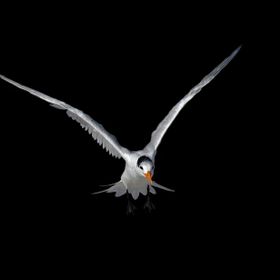Jupiter on 15 October. The Great Red Spot front and center. One of Jupiter's Galilean moons, Europa, casting a shadow on the planet. ...
Read more
Jupiter on 15 October. The Great Red Spot front and center. One of Jupiter's Galilean moons, Europa, casting a shadow on the planet.
Read less
Read less
Views
35
Likes
Awards
Winter 23 Award
Top Ranks
Categories
Same photographer See allBehind The Lens
Discover more photos See all
Behind The Lens
Location
I captured this image from my backyard in the Puget Sound region of Washington state.Time
Jupiter has been bright in the night sky for the past several months, reaching opposition (when Earth is in direct line between the planet and the sun) on November 2nd. It's been rising a little earlier in the evening with each passing day and takes a couple of hours to rise high enough in the sky for the best imaging. When I captured this image (15 Nov), it was about 1:30am. Jupiter was at its highest point in the sky.Lighting
Normally, for deep space astrophotography, the darker the skies, the better, but that's not quite so critical for planetary photography. You can capture the planets in fairly light polluted skies because the planets themselves are pretty bright and so much closer and visible to the eye than deep space objects like nebula or galaxies.Equipment
This type of image is not captured with conventional camera/lens photography. In order to catch details in the planet you can't just take a single picture because atmospheric distortion will destroy detail and you'll likely wind up with a blurry distorted ball. For this image, I used a 12" Meade LX850 telescope atop their LX850 equatorial tracking mount. Attached to the telescope, I used a 4x powermate image amplifier, an LRGB filter wheel. At the end of the image train was the camera, a Skyris 236M video camera designed for planetary photography. This is a monochrome camera which is why I needed the LRGB filter wheel to achieve a full color image. The camera is connected to a laptop where the video is recorded in specialized software called Fire Capture. I can adjust shutter speeds, gain and frame rate in the software and monitor the planet in real time. In front of the telescope, I use a dew heater. To power all of this, I now use a Bluetti solar generator. I can run the entire rig from that all night with no problems.Inspiration
Jupiter was in a great position for imaging this year. High in the sky, at a +13 deg declination, for minimum atmospheric distortion and being near to opposition, it was relatively close to Earth.Editing
The post processing is a bit more complex than conventional photography. The end product is a result of aligning and stacking literally thousands of frames taken with the video camera. Generally the more frames you can get, the better signal to noise ration you'll have but there are limits due to the planet's rotation unless de-rotation software is employed. Three separate video files are required for a full color image. One file is taken through a red filter, one through a green and one through a blue filter. Each file, in this image, consisted of 4,000 frames. The individual frames in each video file are analyzed and aligned and stacked in software designed for the task. I typically use the best 30% to 40% of the frames for stacking to produce a single image. At the end of this process, I wind up with three images, one from each video file, giving me red, green and blue filter images. I take these images into photoshop for integration into a full color (RGB) image.In my camera bag
For images like this I don't really have a "bag." My telescope rig is pretty big and not easily transportable. I have two different Powermates, a 2x and a 4x, and a couple of different video cameras, two monocams and one color. I also have a Bluetti solar generator that works great to power the telescope, dew heater, camera and laptop.Feedback
If you've never done this type of photography before, my advice is to read up on it before getting into it. Things can get expensive if you're not careful. For planetary photography, you'll need a descent telescope mounted on a mount capable of tracking with the rotation of the Earth. The camera can be anything that does video but your best bet is to use a camera designed for the purpose. Good planetary cameras are inexpensive relative to DSLRs and the latest mirrorless cameras. If you're interested in this type of photography, I would also suggest looking up a local astronomy club and attending one of their star parties. Lots of friendly people eager to share their knowledge. On a clear night, you'll be able to see what other people are doing and how they're doing it. You can save yourself a lot of time and money (and maybe frustration) as you venture out and try to capture the planets.













































